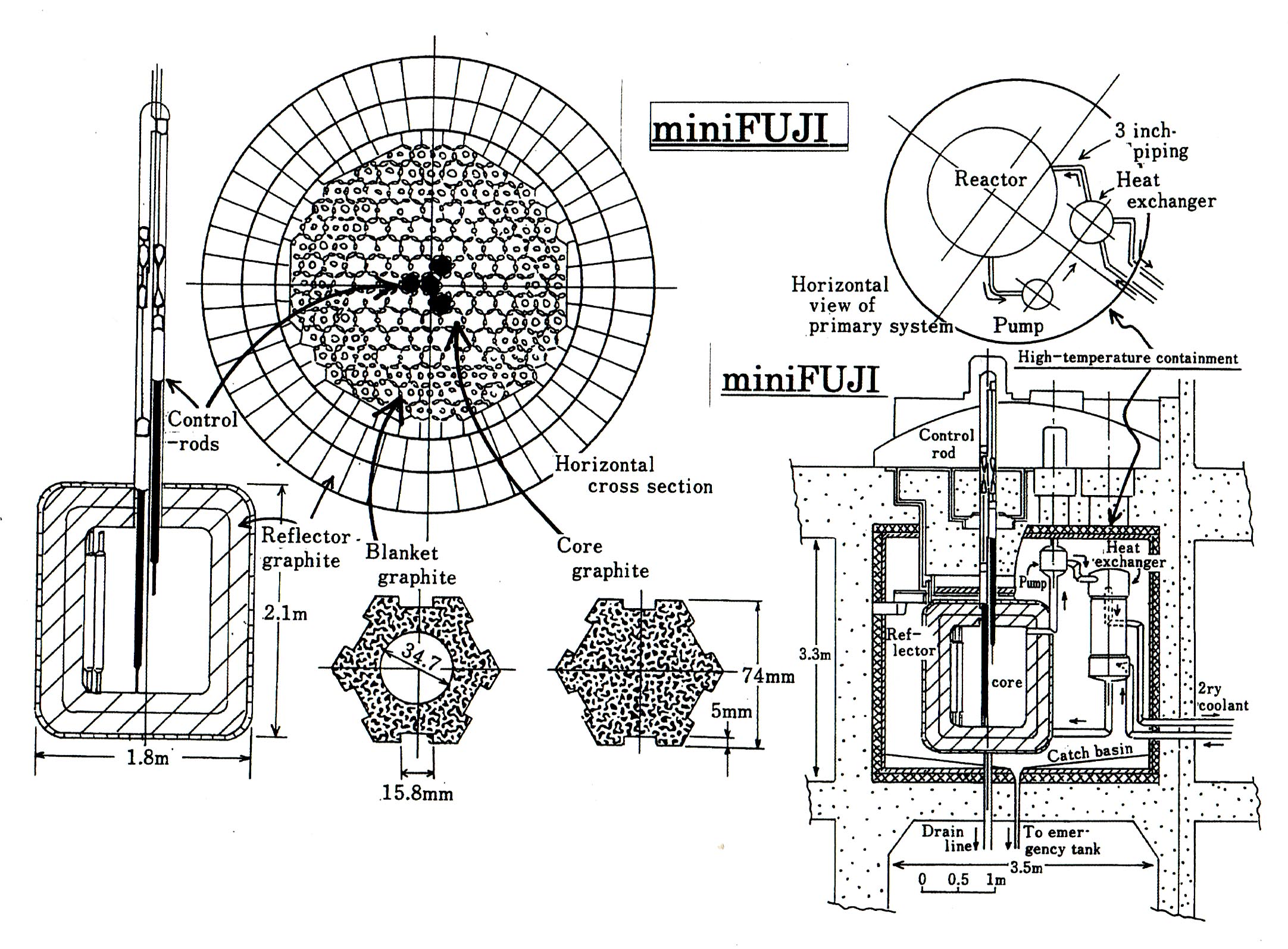More on the IThEMS Business Plan from Dr. Kazuo Furukawa (original) (raw)
IThEMS represents the first serious attempt to found a business intended to produce Molten Salt Reactors. Dr. Kazuo Furukawa, the designer of the FUJI and Mini-FUJI reactors, has made the realistic decision to use Oak Ridge National Laboratory proven technology, in his initial reactor designs. Although many observers believe that it would take a generation or more to develop mature Molten Salt Reactor, in fact theORNL Molten Salt Reactor Experiment demonstrated that a working MSR was possible with no further R&D investment. The simplicity of the MSR makes quick development and commercialization possible. Thus the IThEMS estimate that it could put a small commercial reactor within 6 years in not unrealistic.
Dr. Kazuo Furukawa is back in Japan, and has sent me a number of interesting documents, The most interesting of which is titled IThEMS Outlook. This document included information on a number of interesting topics including a Memorandum of Understanding between International Thorium Energy & Molten-Salt Technology Inc. (IThEMS), and a number of parties from the Czech Republic who have a prior interest in the development of molten salt nuclear technology.
IThEMS expects further technology development in such areas as:
1 Fuel-Salt loop technology including necessary component tests,
2 Coolant-salt loop technology including necessary component tests,
3 Structural material development and some main components fabrication,
4 Main components design, fabrication and tests,
5 Other relating items technology development.
At last report, IThEMS was also looking for an American business partner, but no possible American partner is mentioned in the IThEMS Outlook report. IThEMS Outlook does report the Mini FUJI business plan.
The plan calls for a Mini-FUJI Reactor R&D investment of 300millionovera6yearperiodoftime,withsalesbeginninginthe5thyear.Bythe7thyearsalesareanticipatedtoreachthelevelof50unitsayear,andthatisexpectedtoreach200unitesayearbythe10thyear.Mini−FUJIreactorsareexpectedtoproduce10MWeandsellfor300 million over a 6 year period of time, with sales beginning in the 5th year. By the 7th year sales are anticipated to reach the level of 50 units a year, and that is expected to reach 200 unites a year by the 10th year. Mini-FUJI reactors are expected to produce 10 MWe and sell for 300millionovera6yearperiodoftime,withsalesbeginninginthe5thyear.Bythe7thyearsalesareanticipatedtoreachthelevelof50unitsayear,andthatisexpectedtoreach200unitesayearbythe10thyear.Mini−FUJIreactorsareexpectedtoproduce10MWeandsellfor60 million. The initial manufacturing cost is anticipated to be approximately 40million,andthatfigureisexpectedtodropto40 million, and that figure is expected to drop to 40million,andthatfigureisexpectedtodropto30 million as production rises. Sales are anticipated to reach 12Billionbythe10thyear,withanassumedgrossprofitfromsalesof3012 Billion by the 10th year, with an assumed gross profit from sales of 30%. Thus the potential after tax income of IThEMS would run to 12Billionbythe10thyear,withanassumedgrossprofitfromsalesof302.5 billion. And this would be before IThEMS brings its major product, the 200 MWe FUJI reactor to the market.
Power from the Mini-FUJI is expected to cost 0.061perkWhtoproduce,withananticipatedretailcostof0.061 per kWh to produce, with an anticipated retail cost of 0.061perkWhtoproduce,withananticipatedretailcostof0.11 per kWh in the United States, and 0.22perkWhinJapan.Itshouldbenotedthatthemini−FUJIisamicroscalenucleargenerationunitthatisnotintendedtoproducebaseloadelectricityforthegrid.TheFUJIisintendedtoproducebaseloadelectricity,andcanbeexpectedtosellforconsiderablylessperkWhthantheMini−FUJI,yetitstillcouldmakeaverylargeprofit.Projectingsalesfiguresoutanotherdecade,IThEMScouldhave0.22 per kWh in Japan. It should be noted that the mini-FUJI is a micro scale nuclear generation unit that is not intended to produce base load electricity for the grid. The FUJI is intended to produce base load electricity, and can be expected to sell for considerably less per kWh than the Mini-FUJI, yet it still could make a very large profit. Projecting sales figures out another decade, IThEMS could have 0.22perkWhinJapan.Itshouldbenotedthatthemini−FUJIisamicroscalenucleargenerationunitthatisnotintendedtoproducebaseloadelectricityforthegrid.TheFUJIisintendedtoproducebaseloadelectricity,andcanbeexpectedtosellforconsiderablylessperkWhthantheMini−FUJI,yetitstillcouldmakeaverylargeprofit.Projectingsalesfiguresoutanotherdecade,IThEMScouldhave200 billion a year in sales, and profits as high as $60 billion, making it, if everything goes according to plan, the largest energy business in the world.
Not I am not claiming that IThEMS will end up as a $200 billion a year business, only that it could if everything goes according to plan. Things, of course, seldom proceed as planned, without some hitches, but IThEMS does have prospects.
